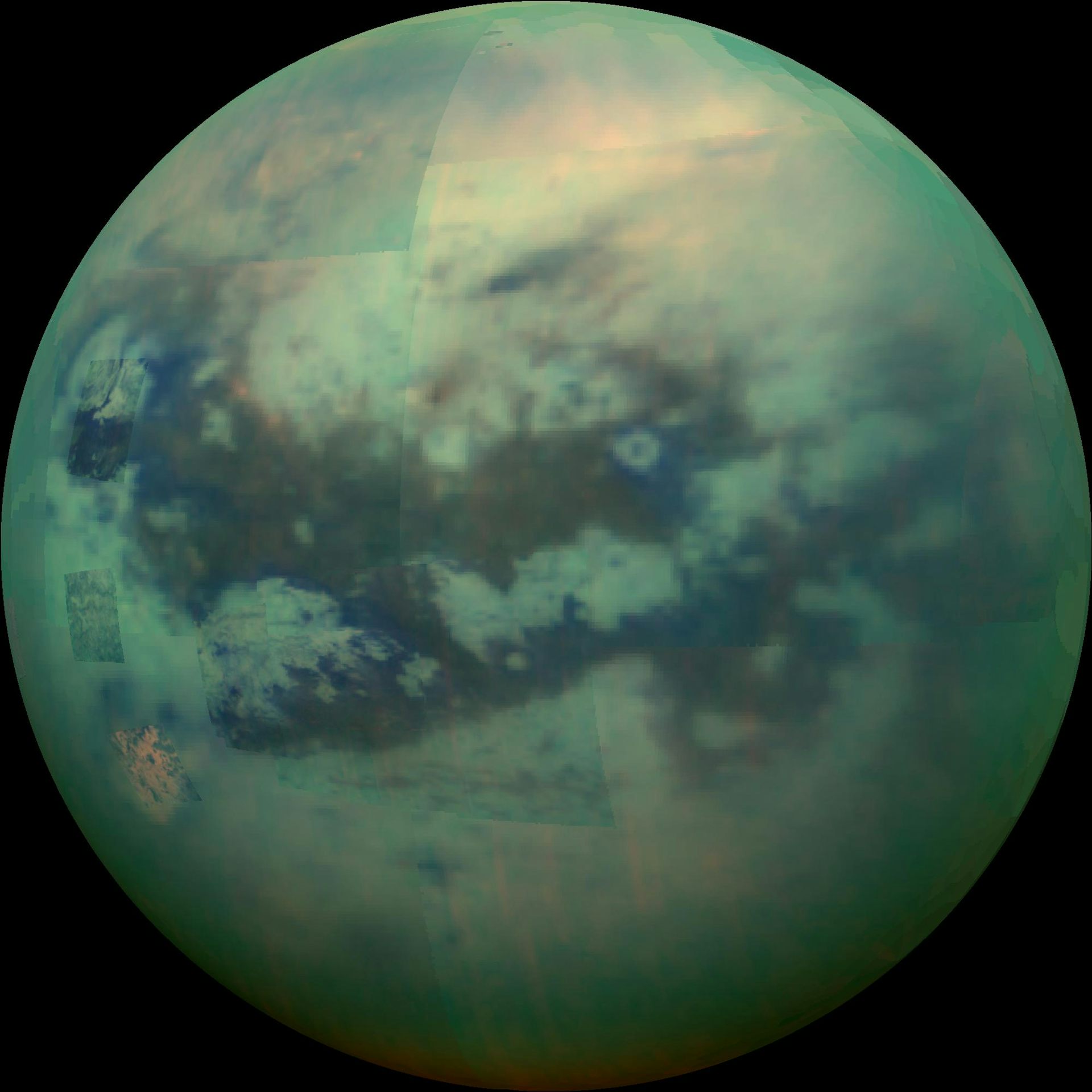ARTICLE AD
Hopes of discovering some kind of extraterrestrial life within our own Solar System have suffered a blow with a new paper suggesting Saturn's largest moon is likely barren.
"Unfortunately, we will now need to be a little less optimistic when searching for extraterrestrial lifeforms within our own Solar System," says University of Western Ontario astrobiologist Catherine Neish.
"The scientific community has been very excited about finding life in the icy worlds of the outer Solar System, and this finding suggests that it may be less likely than we previously assumed."
As one of the Solar System's few celestial bodies with continuous liquid water – trapped below a crust of ice up to 170 kilometers (105 miles) thick – the massive moon of Titan has been a contender for generating some kind of biochemistry.
Life also requires a heck of a lot more than water to exist, and so far only Earth has proved to possess all the necessary ingredients in large enough quantities. But Titan also has organic molecules aplenty in its methane-rich atmosphere. In fact, Titan produces so many bits of these tiny carbon based solids that they form deposits of plains, labyrinths, and dunes beneath the mysterious world's opaque cloudy atmosphere.
But for living chemistry to arise in the subterranean oceans, those molecules would need to seep through the ice into that underground layer of liquid.
 Infrared allowed the Cassini spacecraft to penetrate Titan's clouds and reveal details of its surface for the first time in 2015. (NASA/JPL/University of Arizona/University of Idaho)
Infrared allowed the Cassini spacecraft to penetrate Titan's clouds and reveal details of its surface for the first time in 2015. (NASA/JPL/University of Arizona/University of Idaho)So Neish and team estimated the flow of these molecules through the moon's environments using impact craters as a potential driving force. Within these moon-dents, the carbon based molecules mix with liquid water which then seeps through the thick icy crust into the massive ocean below.
They found the rate of comet strikes would only at most transfer an elephant-mass equivalent of organic molecules (around 7,500 kilograms of glycine) a year into the potential sanctuary of the moon's ocean.
"One elephant per year of glycine into an ocean 12 times the volume of Earth's oceans is not sufficient to sustain life," says Neish. "In the past, people often assumed that water equals life, but they neglected the fact that life needs other elements, in particular carbon."
Sadly the calculations suggest Titan remains barren for want of a free-flowing carbon cycle.
"This work shows that it is very hard to transfer the carbon on Titan's surface to its subsurface ocean – basically, it's hard to have both the water and carbon needed for life in the same place," explains Neish.
Since we don't know how much carbon can be sourced from a moon's interior, the crucial element's presence in Titan's atmosphere made it a fairer bet for finding life compared to its icy neighbors, like Jupiter's moons Europa and Ganymede.
"Unless biologically available compounds can be sourced from Titan's interior, or be delivered from the surface by other mechanisms," the researchers explain, "our calculations suggest that even the most organic-rich ocean world in the Solar System may not be able to support a large biosphere."
frameborder="0″ allow="accelerometer; autoplay; clipboard-write; encrypted-media; gyroscope; picture-in-picture; web-share" allowfullscreen>
As disappointing as this may be, it doesn't reduce the value of studying this shrouded, secretive icy moon. Titan's surface composition creates a fascinating laboratory for all sorts of organic chemistry which may be able to teach us so much about the Universe and ourselves.
"It is nearly impossible to determine the composition of Titan's organic-rich surface by viewing it with a telescope through its organic-rich atmosphere," says Neish. "We need to land there and sample the surface to determine its composition."
Neish is part of NASA's Dragonfly project intending to land a drone on the surface of Titan in 2028.
"If all the melt produced by impacts sinks into the ice crust, we wouldn't have samples near the surface where water and organics have mixed. These are regions where Dragonfly could search for the products of those prebiotic reactions, teaching us about how life may arise on different planets," Neish concludes.
This research was published in Astrobiology.

 10 months ago
66
10 months ago
66 

